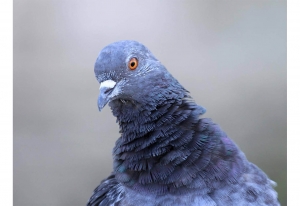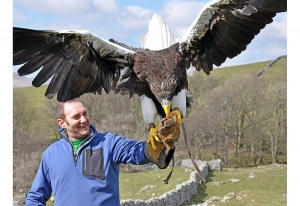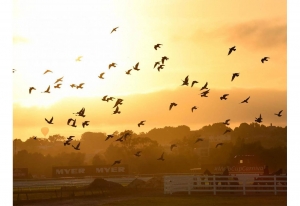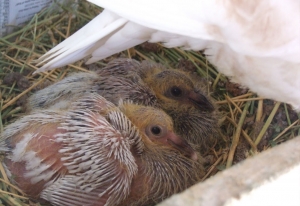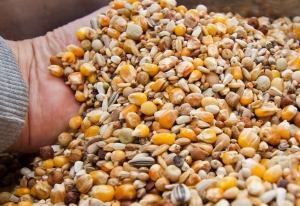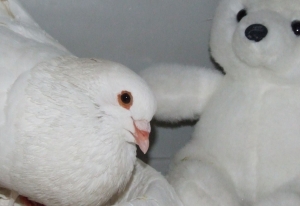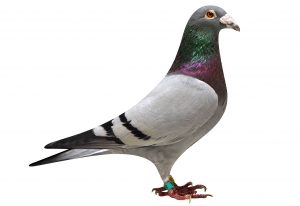If you have just one or two pigeons, you may opt to keep them in a large cage in your house. Keep the cage out of direct sunlight and away from drafts -- as well as any cats or dogs who share your household. Your bird's cage should measure at least 2 feet high by 2 feet wide and 2 feet long, but a larger cage is preferable. Clean the cage daily.

Super User
Lorem ipsum dolor sit amet, consectetur adipisicing elit, sed do eiusmod tempor incididunt ut labore et dolore magna aliqua. Ut enim ad minim veniam, quis nostrud exercitation ullamco laboris nisi ut aliquip
The hidden world of Turkey's prize pigeons
As night-time approaches in Sanliurfa, southeastern Turkey, most of the alleyways of the city’s old bazaar are emptying out, except for one. The bustle of daytime trading has died down, but on this little street, a stream of men carry cardboard boxes filled with pigeons to a cluster of three teahouses. Here, they sell the birds at Sanliurfa’s famed auctions to a dedicated band of pigeon keepers and breeders, a pastime that has been thriving for hundreds of years across the region and over the nearby border into war-torn Syria.
In a country where the minimum wage is about 1,400 liras (£298) a month, enthusiasts regularly easily spend hundreds of dollars for one bird. “I once sold a pair of pigeons for 35,000 Turkish lira,” says auctioneer Mam Dildas. “This is a passion, a hobby you cannot quit. I’ve been known to sell the fridge and my wife’s gold bracelets to pay for pigeons.”
Sanliurfa sits just 50km from Syria, in a southeastern region rocked by its own clashes between government troops and Kurdish insurgents. But the trade has taken the turmoil in its stride and carried on. In the early days of the conflict next door, there was a glut of birds on the market as enthusiasts from northern Syria fled into Turkey with their pigeons.
“Prices fell due to oversupply but as the conflict escalated and there were no more pigeons coming from Syria, prices rose again,” says 23-year-old breeder Smail Ozbek. He keeps about 200 pigeons – together worth about 50,000 lira – in lofts fitted with alarms and closed circuit TV cameras. At the auction, men sip tea and smoke cigarettes as Dildas picks up a bird and shows it to the crowd. He gives a starting bid price and buyers shout out their offers.

Indian police seize 150 'spy' pigeons smuggled over border with Pakistan
Over 150 ‘spy’ pigeons have been seized by police in India, after officers became suspicious they were being used for espionage.
A police spokesman from the city of Jammu in Kashmir state said a large number of pigeons had been discovered “cruelly” packed into a banana container and were rescued under the Cruelty to Animals Act during a routine inspection.
Security officials noticed the pigeons had coloured rings attached to their legs and magnetic bracelets around their necks, raising suspicions about what the birds were being used for.
The pigeons were reportedly suffering from severe dehydration following their journey, and were handed over to local welfare charity Save Animals Value Environment (SAVE).
An activist from SAVE said the largest pigeons had had their wings clipped, Times of India reported.
The local deputy commissioner in Jammu has ordered an investigation into the capture of the birds, and said the pigeons would only be released once the investigation was completed.
Last week, police in India intercepted a suspected spy pigeon after it was found to be carrying an “abusive” note addressed to Indian Prime Minister Narendra Modi.

Nikita the Steller's sea eagle on the loose in Yorkshire Dales
A giant sea eagle with an 8ft wing-span is loose in the Yorkshire Dales after escaping from its trainer.
Chris O’Donnell lost Nikita, a Steller’s sea eagle, after training in windy conditions near Brackenbottom, North Yorks, and believes the 10-year-old eagle may have been blown off course.
Police today stated the bird was not dangerous to the public, but yesterday tweeted a warning to pet owners to keep small animals indoors.
Nikita's trainer said yesterday: “She’s massive – like a small glider,” but reassured people the eagle was harmless.
Mr O’Donnell believes the bird will be found a few miles away, adding: “It’ll be sitting in a field wishing it was back home.”
Steller's sea eagles are native to eastern Russia, and migrate to Japan each winter where they are now revered.
However, the eagles are also renowned for their powerful and aggressive nature, surviving on a diet of small animals, fish and carrion.
In captivity the eagles are fed on a diet of frozen pigeons, squirrels and rabbits.
Speaking to the BBC, Mr O’Donnell added: “If this turns up on your bird table you’re going to call the police.”
North Yorkshire Police have asked anyone who spots the bird to call 101.
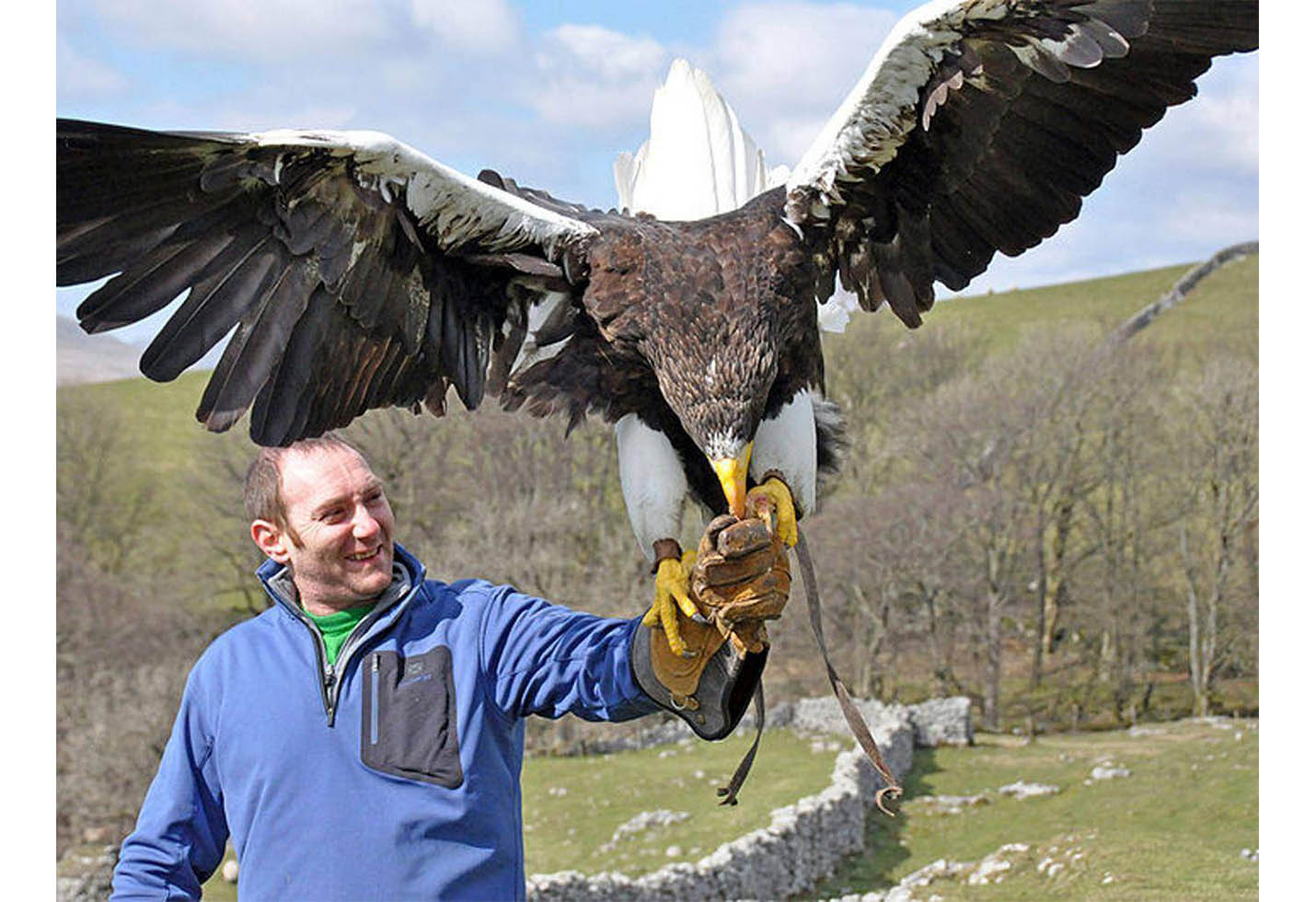
How a species of pigeon went from five billion to zero and why it's so terrifying
Passenger pigeons were once the most abundant bird in North America, but hunting reduced their numbers from five billion to zero in a matter of decades.
In the 19th century, flocks of passenger pigeons were so big they were known to block out the sun in flocks that went on for 300 miles.
But in 1914 the last surviving member of the species, a female called Martha, died alone in Cincinnati Zoo.
Now, genetic analysis of passenger pigeon specimens has revealed the reason for the species’ shocking decline.
It has also provided a warning that even the most abundant animals need to be protected.
“We often think of large populations as a safeguard against extinction,” said University of California, Santa Cruz biologist Professor Beth Shapiro, one of the study’s co-authors.
“What this study shows, however, is that we must also consider the longer-term natural history of a species when making decisions about their extinction risk,” she said.
Analysis of passenger pigeon genomes by Professor Shapiro and her colleagues revealed that while their large populations allowed for fast adaptive evolution, it was not enough to prevent their demise.

Pigeon Housing
Pigeon Housing

An outdoor pigeon coop or loft is also suitable housing, and that's where you would keep homing or racing pigeons. If you purchase or build your own coop, make sure the pigeon's flying area faces south, and keep it away from trees or other buildings. The coop must stay dry -- pigeons don't like wet environments. Lining the floor with straw or shavings, and cleaning it regularly usually keeps it dry and free from molds. Provide plenty of strong perches and avoid overcrowding your birds. Place a shallow bowl of water in the coop a few times a week for pigeons to bathe. Leave it there for a few hours and then remove the dirty water.
Baby Pigeon Care
Baby Pigeon Care
Pigeons reach sexual maturity at about 6 months. If your pigeon hen lays eggs and hatches chicks, she and her mate can do most of the work themselves regarding care of the offspring. Pigeons -- both male and female -- actually produce milk in their crops for their young. The crop is part of the digestive tract of many avian species, but few produce milk. The milk is far healthier for squabs, or baby pigeons, than any other type of food.
If you must care for a baby pigeon without the aid of the parents, ask your veterinarian for a suitable pigeon milk recipe. She may recommend a commercial baby bird formula blended to a liquid state for newly hatched chicks and fed via syringe.
When placing the syringe into the bird's mouth, make sure the tip goes all the way into the crop. Place a bit of petroleum jelly on the tip of the syringe for lubrication.
- Until the bird is about 5 days old, feed the liquid mixture two or three times a day.
- After day 5, you can switch to a larger, feeding syringe.
- At about 3 weeks, leave small numbers of seeds in the baby's cage, so she can learn to peck.
- Teach a baby bird to drink by dipping the beak in a small dish of water, also left in the cage.
- Wean the baby by leaving appropriate food out for her, and hand-feeding just once a day, until it's obvious she's eating and drinking heartily.
Pigeons fledge between the ages of 4 to 6 weeks. By that point, they can consume adult feed.
Feeding Pigeons
Feeding Pigeons

For best results, give your birds commercial feeds designed specifically for pigeons. Avoid seed-only diets and opt for pelleted feeds, if available. Feeding a seed-only diet can cause calcium deficiency. In addition, offer your birds a selection of cleaned and chopped fresh vegetables and fruits daily. Suitable choices include:
- fruit, including apples, pears and cantaloupe
- greens, including kale and spinach
- broccoli and carrots
- and blueberries.
Pigeons also enjoy bits of breadcrumbs, mashed eggs and cooked rice. For a special treat, serve your birds meal worms. Your pigeons should always have fresh, clean water available. Clean your birds' food and water containers every day.
If you have racing or homing pigeons, add supplements to their food. Provide them with grit and/or oyster shells. The latter supplies extra calcium, and isn't included in standard commercial pigeon feeds.
If you have fancy or fantail pigeons, add oyster shells or other calcium supplements to their diet, especially if they are pets kept indoors. Such supplements are advisable for any indoor dove or pigeon.
Pigeons As Pets
Pigeons As Pets: Outside or Indoors
Pigeons Make Great Pets — And They Need Our Help
I started Palomacy (originally named MickaCoo Pigeon & Dove Rescue) in San Francisco, CA when I discovered domestic (unreleasable) pigeons were being killed in shelters for lack of homes. Pigeons such as Kings, Fantails, Tumblers and Homers are smart, beautiful and gentle birds. They’ve been selectively bred and tamed and, while they can’t survive in the wild, they thrive as pets. Many pigeons (and other birds as well) wind up in animal shelters, either surrendered or found as strays, but they need adopters to get out alive.
Pigeons make great pets both indoors as part of the family or outside in a rodent and predator-proof aviary.
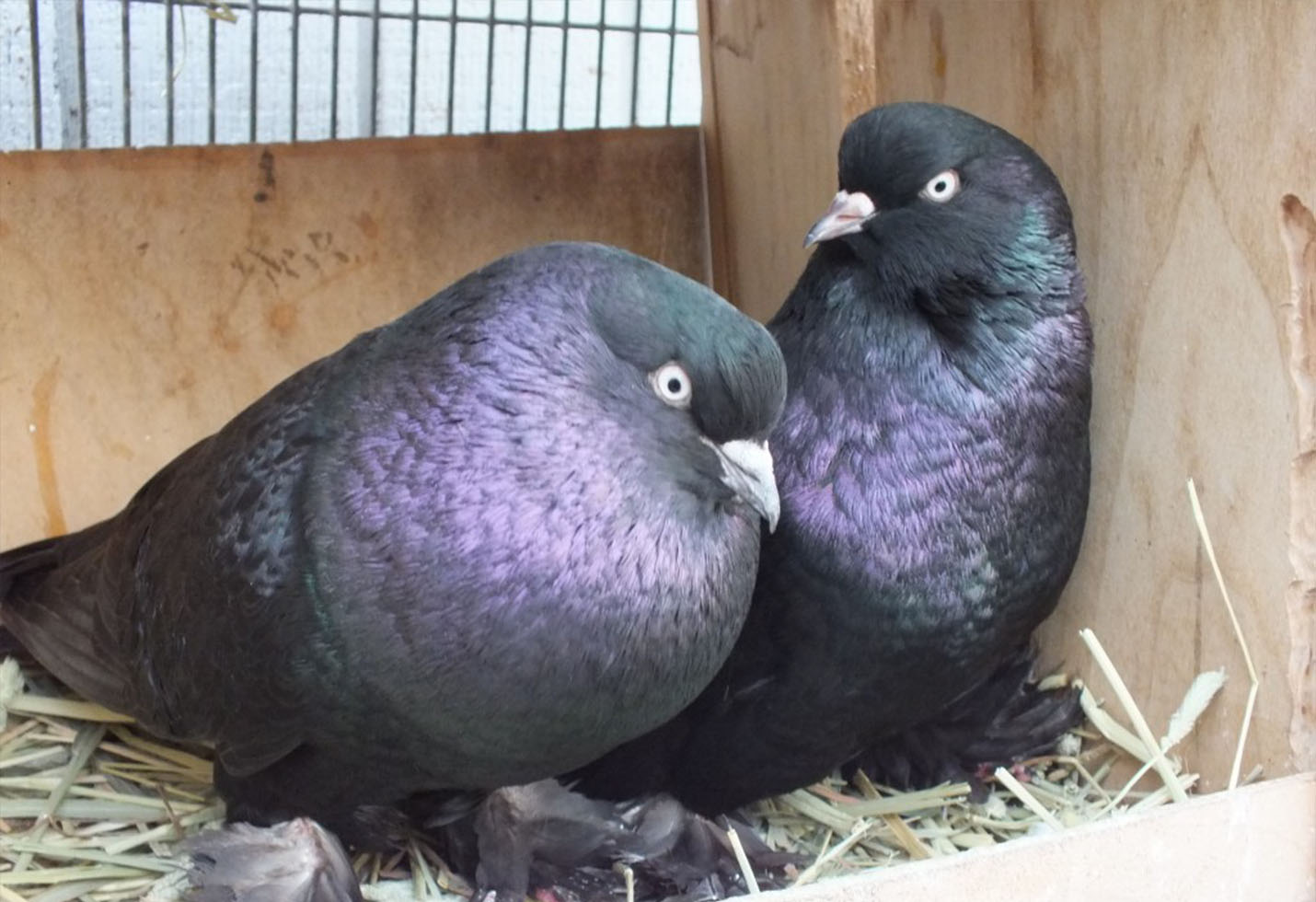
Pigeons as Pets in an Outdoor Aviary
Rescued pigeons can’t be safely flown (they are easy targets for hawks and cats) and so, when outside, must be protected in an aviary. It needs to be predator-proof (sturdy and securely built all the way around including top and bottom), rodent-proof (use 16 gauge or better hardware mesh with openings half inch or smaller) and include a sheltered corner that will stay shady on the hottest days and dry during the rainiest. No one has ever wished for a smaller aviary so make it as big as possible. Minimum size for four birds would be at least 6 feet long by 4 feet deep and 6 feet high.
Pigeons excel at the leisure arts and spend their time bathing, preening, lounging in the sun, foraging for favorite seeds, watching the sky, napping, showing off and courting. Every four to five weeks, mated couples will lay a pair of eggs (which need to be replaced with fake eggs for pigeon birth control) and take turns sitting on them. Pigeons are extremely devoted to their family and mate for life. They require fresh food and water and a quick poop-scrape daily and a thorough aviary cleaning weekly. Pigeons are beautiful, peaceful and full of personality. With time and attention, most can be hand-tamed. All can be befriended. It’s easy to create a charming, attractive and safe aviary for rescued pigeons.
Pigeons Deserve
Share the Word: Pigeons Need and Deserve Good Homes
I absolutely adore hearing my pet pigeon Frances pitter-pattering around the house on his little pink feet. He’ll do his own thing for a while (lounging in the sun or strutting in front of a mirror) and then come looking for me and always brings me a smile when he comes.
There are lots and lots of beautiful, sweet, innocent domestic pigeons like Frances in need of homes. Lacking survival skills, they cannot be released into the wild and, if they aren’t adopted, they are killed. Please share this story with everybody you know. Most people are completely unaware of the plight of birds in shelters.

 English (UK)
English (UK)  Arabic
Arabic 
